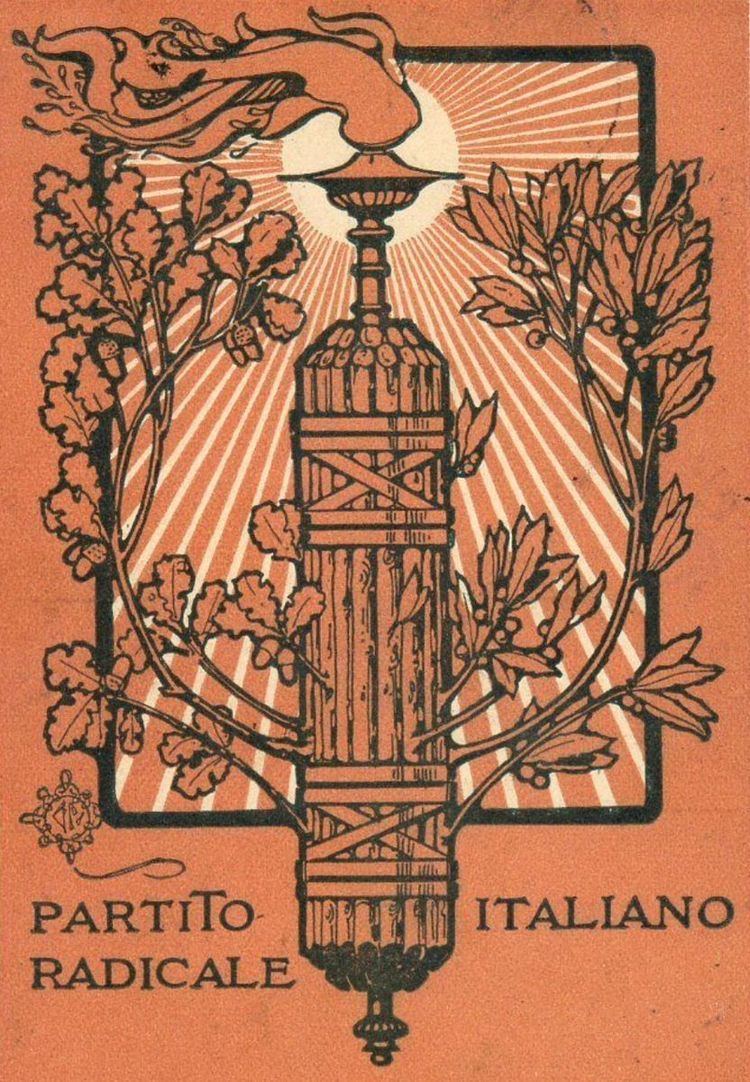 | ||
Historical leaders Ettore SacchiFrancesco Saverio NittiErnesto Nathan Founded May 27, 1904 (1904-05-27) Dissolved April 26, 1922 (1922-04-26) Merged into Italian Social Democratic Party | ||
The Italian Radical Party (Italian: Partito Radicale Italiano), better known simply as Radical Party (Partito Radicale, PR) or Historical Radical Party (Partito Radicale Storico), was a radical, secularist and left-liberal political party in Italy.
History
Since 1877 the Radical Party was active as a loose parliamentary group, emerged from The Extreme. The group was later organised as a full-fledged party in 1904 under the leadership of Ettore Sacchi.
Leading Radicals included Ernesto Nathan (mayor of Rome with the support of the Italian Socialist Party and the Italian Republican Party from 1907 to 1913), Romolo Murri (a Catholic priest who was suspended for having joined the party and who is widely considered in Italy the precursor of Christian democracy), and Francesco Saverio Nitti.
Under the leadership of Nitti, the Radicals became part of the governing coalition dominated by the Liberals of Giovanni Giolitti, who had positioned his party in the centre-left and supported many Radical reforms, while the Radicals moved to the political centre. Nitti himself was Minister of the Treasury from 1917 to 1919 and Prime Minister from 1919 to 1920. In the 1919 general election the Radicals filed joint candidates with the Liberals in 54% of the constituencies.
The Radicals, who obtained their best result in the 1913 general election (8.6% and 73 seats in the Chamber of Deputies) were strong in Lombardy (where Carlo Cattaneo was from), notably in the northern Province of Sondrio and the south-eastern Province of Mantua, northern Veneto and Friuli, Emilia-Romagna and Central Italy, especially around Rome. In the 1900s and the 1910s the Radicals lost votes to the Socialists in Emilia and to the Republicans in Romagna, but strengthened their position in Veneto, notably holding for almost twenty years the single-seat constituencies of Venice and Padua (which had also Radical mayors), and Southern Italy, where they were previously virtually non-existent.
For the 1921 general election the Radicals joined forces with several minor liberal parties in order to form the Democratic Liberal Party. The list gained 10.5% of the vote and 68 seats, doing particularly well in Piedmont and the South.
After World War II some former Radicals led by Nitti joined the National Democratic Union alongside Liberals and other elements of the political bloc that governed Italy from the years of Giovanni Giolitti until the rise of Benito Mussolini's Fascist regime. The Radicals, who were once the far left of the Italian political spectrum, were finally associated with the old Liberal establishment, which was replaced by Christian Democracy as the leading political force in the country.
Some left-wing elements of the old PR took however part to the foundation of the Action Party, while a new Radical Party was launched in 1955 by the left-wing of the Italian Liberal Party. These new Radicals, whose long-time leader was Marco Pannella, claimed to be the ideological successors of Cavallotti's Radicals.
